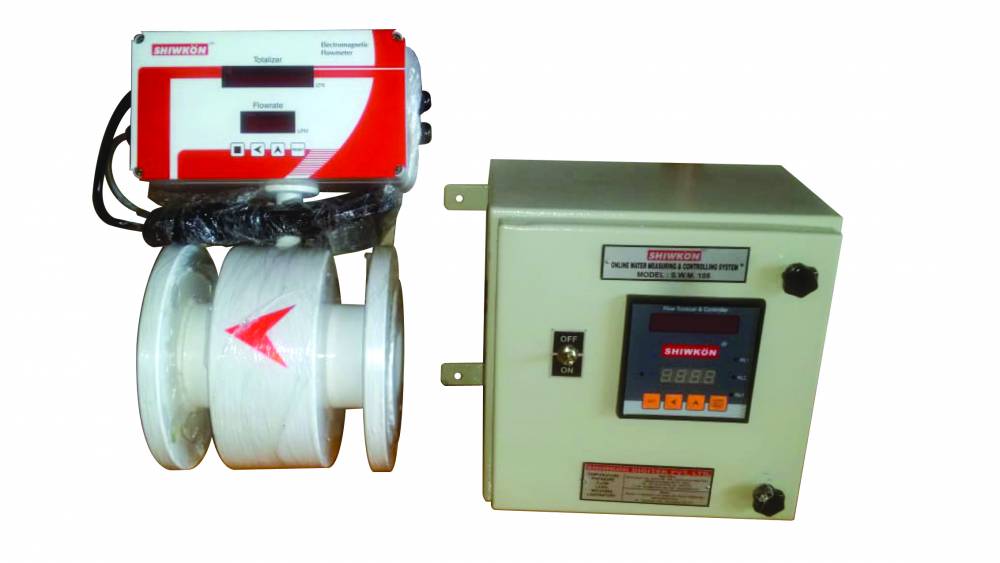
Electro magnetic Flow Meter
An Electromagnetic Flow Meter is a device used to measure the flow of conductive liquids or slurries in pipes and channels. It operates based on Faraday’s Law of Electromagnetic Induction, which states that when a conductive fluid moves through a magnetic field, a voltage is induced that is proportional to the flow rate.
The basic components of an electromagnetic flow meter include:
- Magnetic coils: These generate a magnetic field across the pipe.
- Electrodes: Positioned at the pipe’s interior to detect the induced voltage generated by the moving fluid.
- Flow calculation system: Converts the measured voltage into a flow rate, which is displayed digitally.
Key Features:
- Non-invasive measurement: Since there are no moving parts in the flow path, electromagnetic flow meters provide a maintenance-free operation and no pressure loss.
- Highly accurate: They offer precise flow measurements, especially for conductive liquids such as water, sewage, chemicals, and slurries.
- Wide flow range: Suitable for both very low and high flow rates.
- No impact from fluid properties: The meter measures flow rate without being affected by temperature, pressure, or fluid viscosity, as long as the fluid is conductive.
- Versatile: Commonly used in industries like water treatment, food processing, pharmaceuticals, and chemical manufacturing.
Electromagnetic flow meters are widely favored in applications where accuracy, low maintenance, and the ability to measure a wide range of conductive fluids are essential. They are particularly beneficial for measuring flow in large pipes or in systems that handle challenging substances like slurries.
